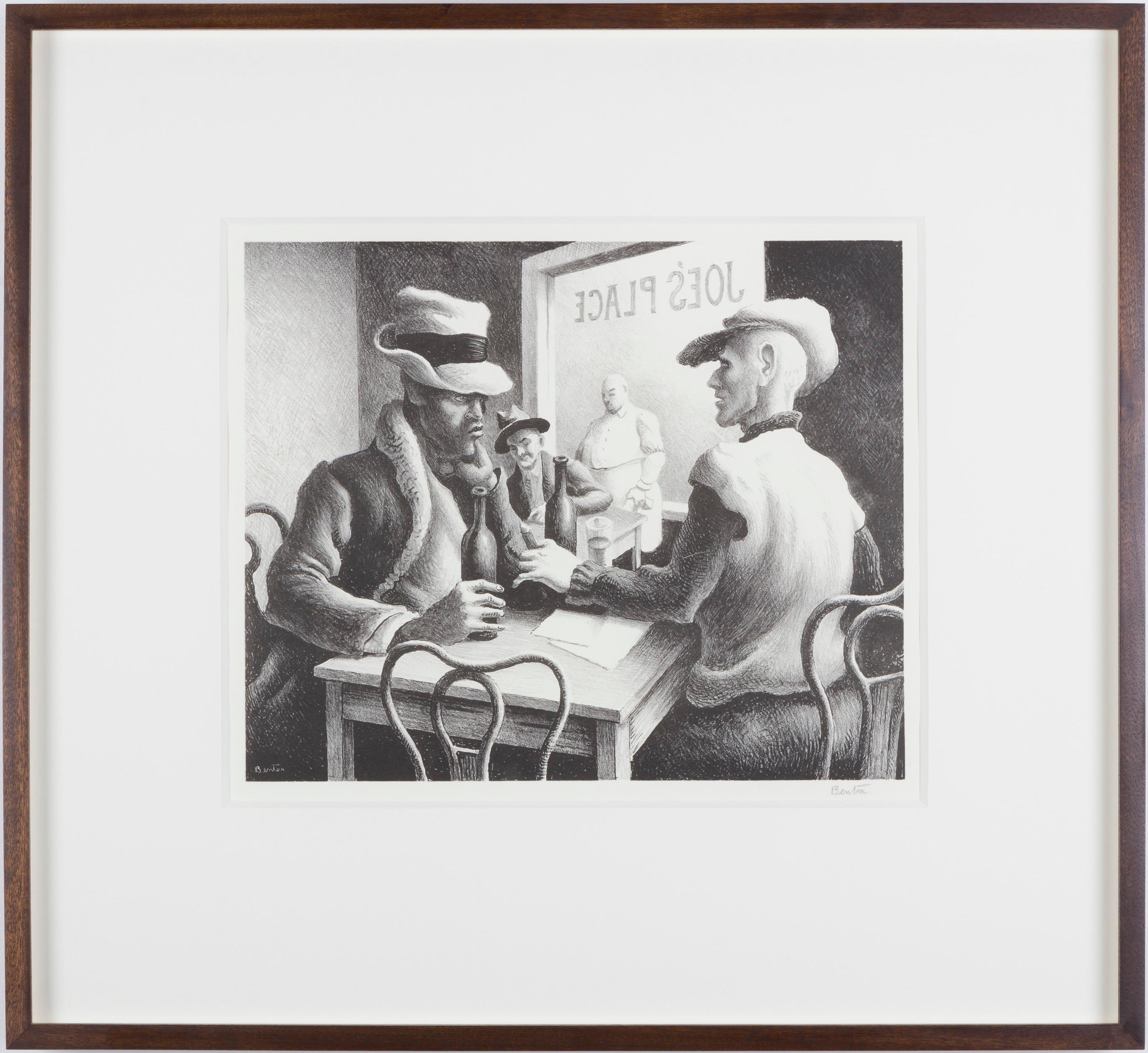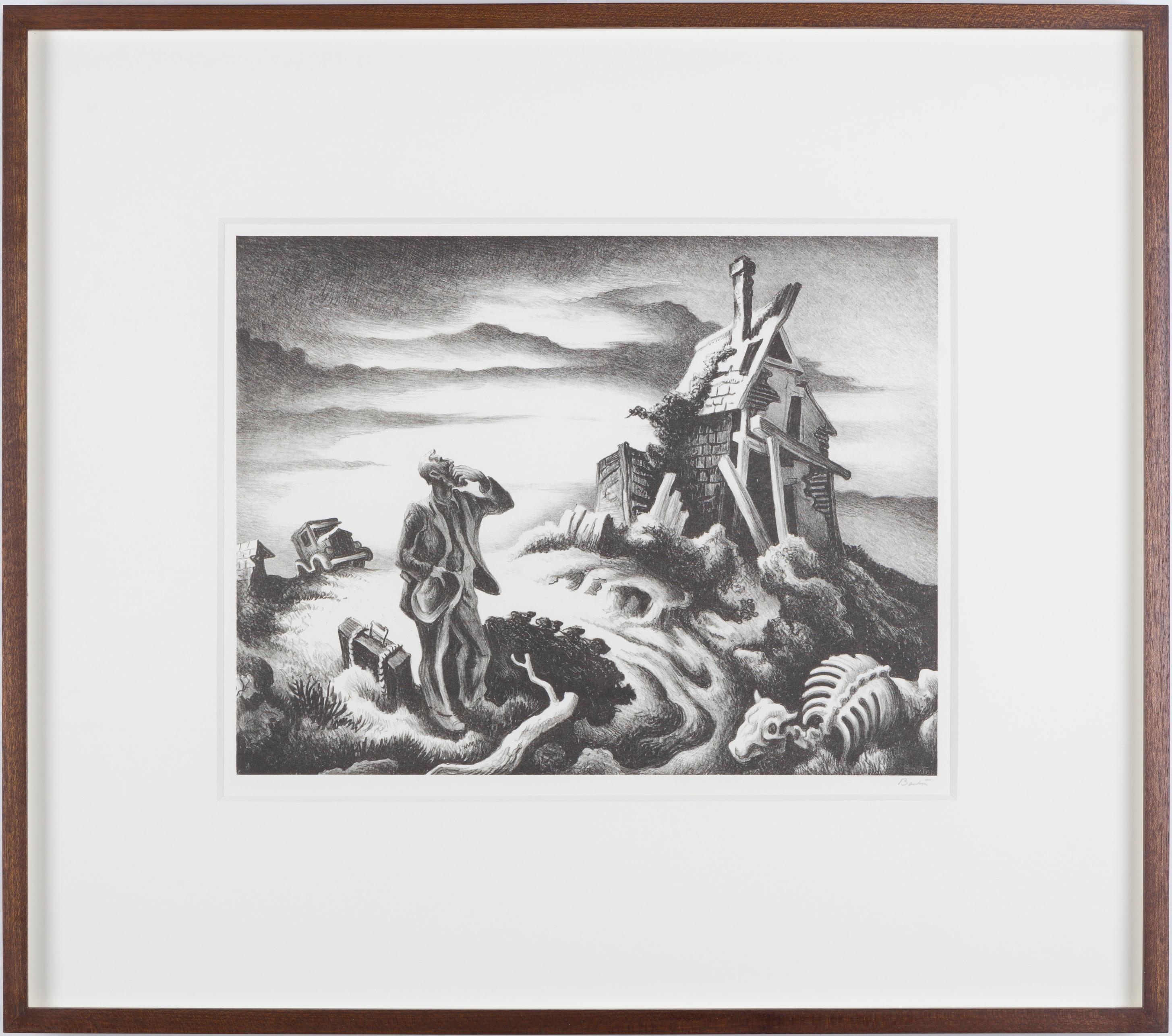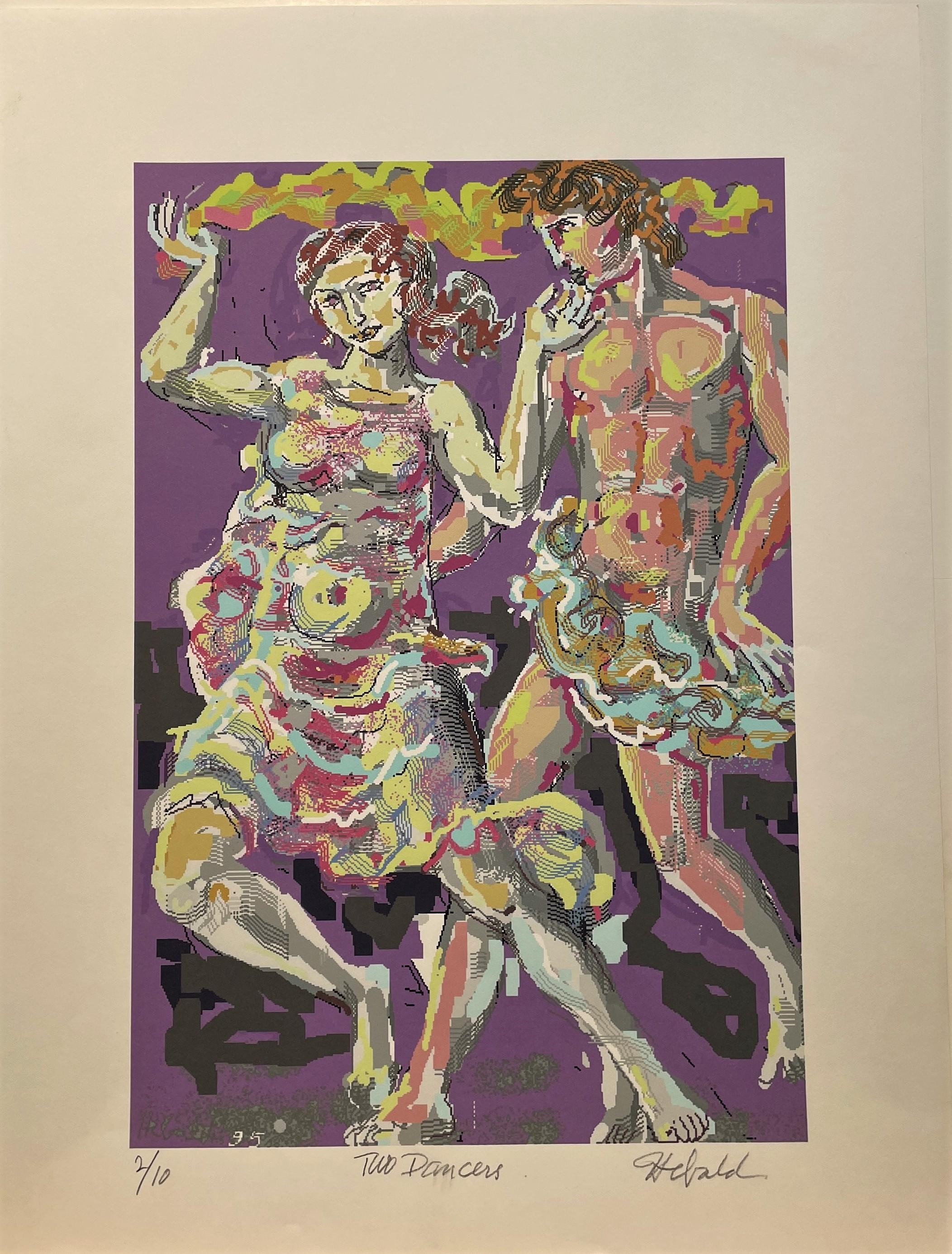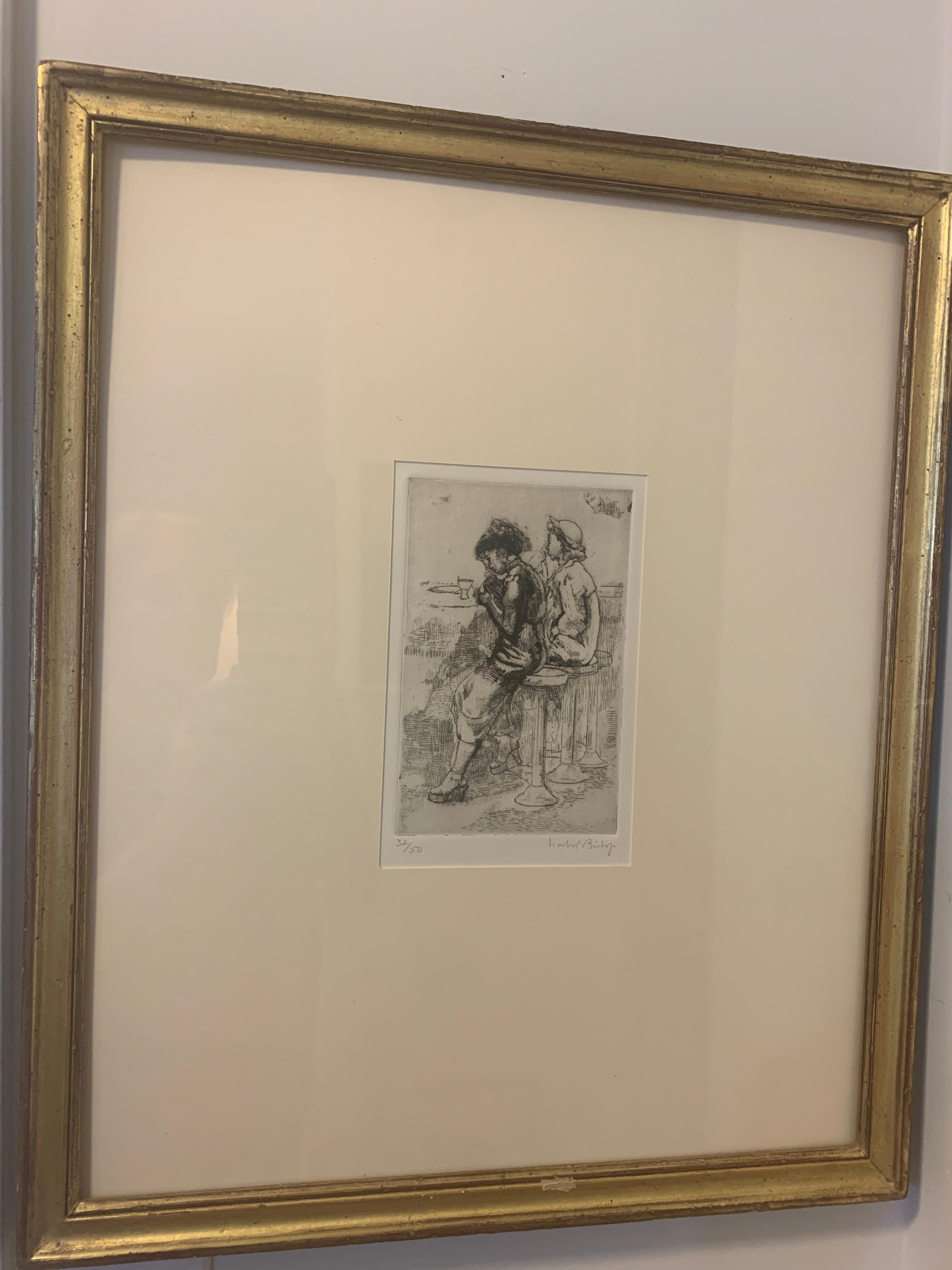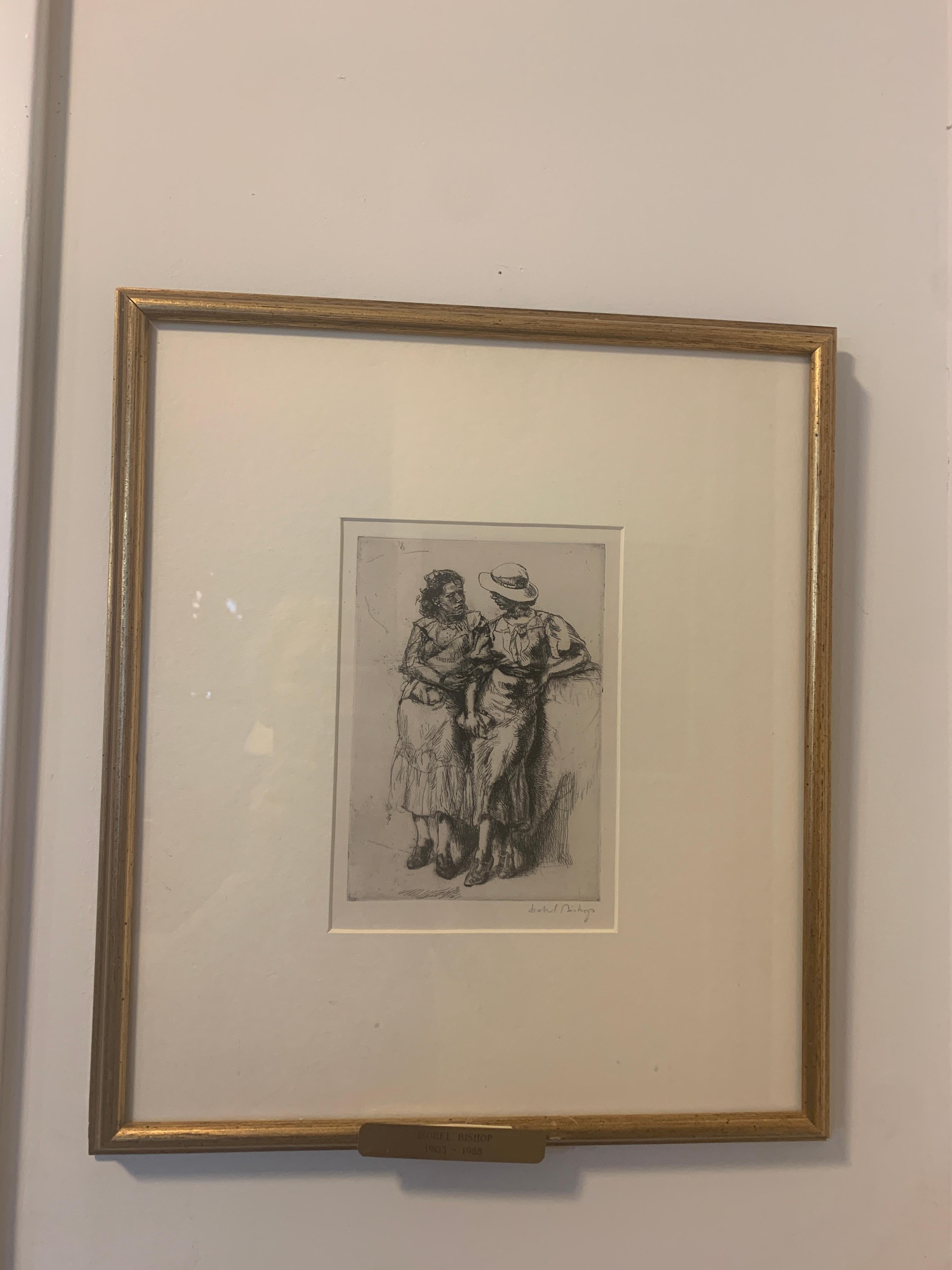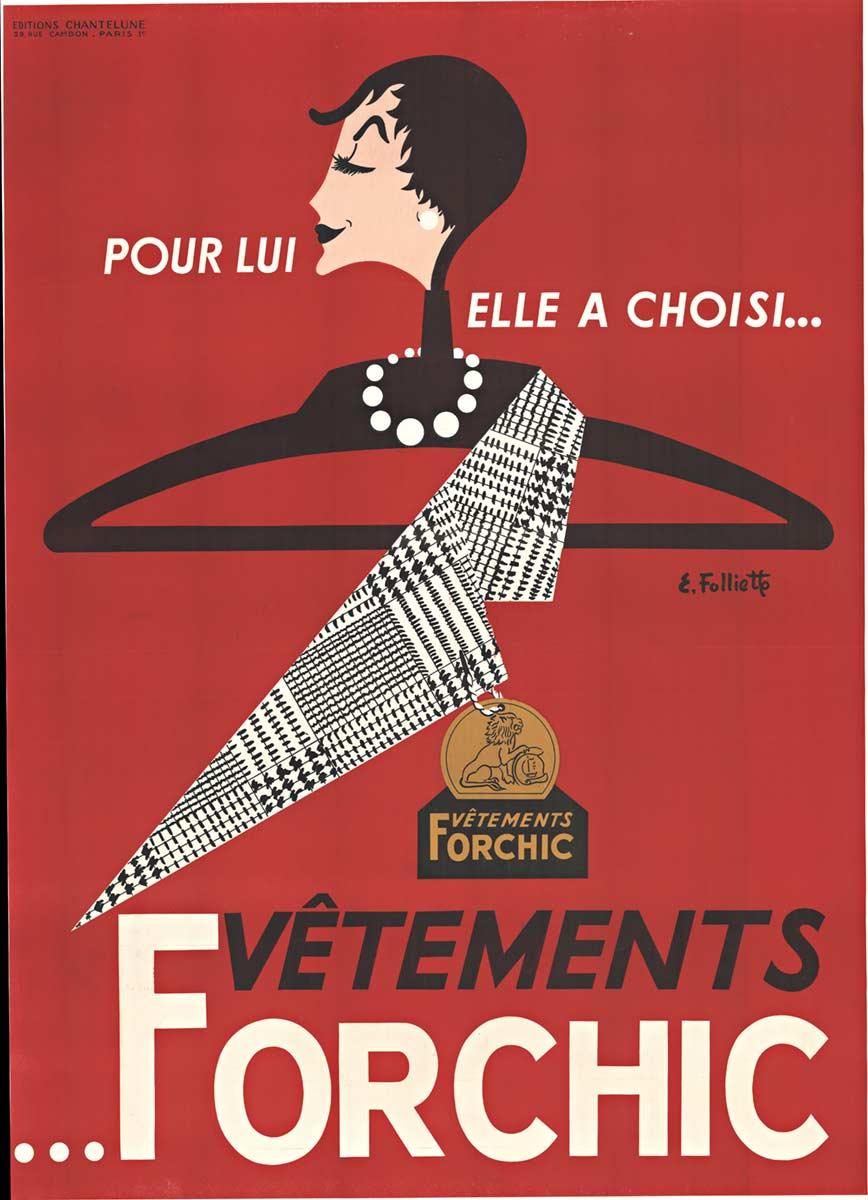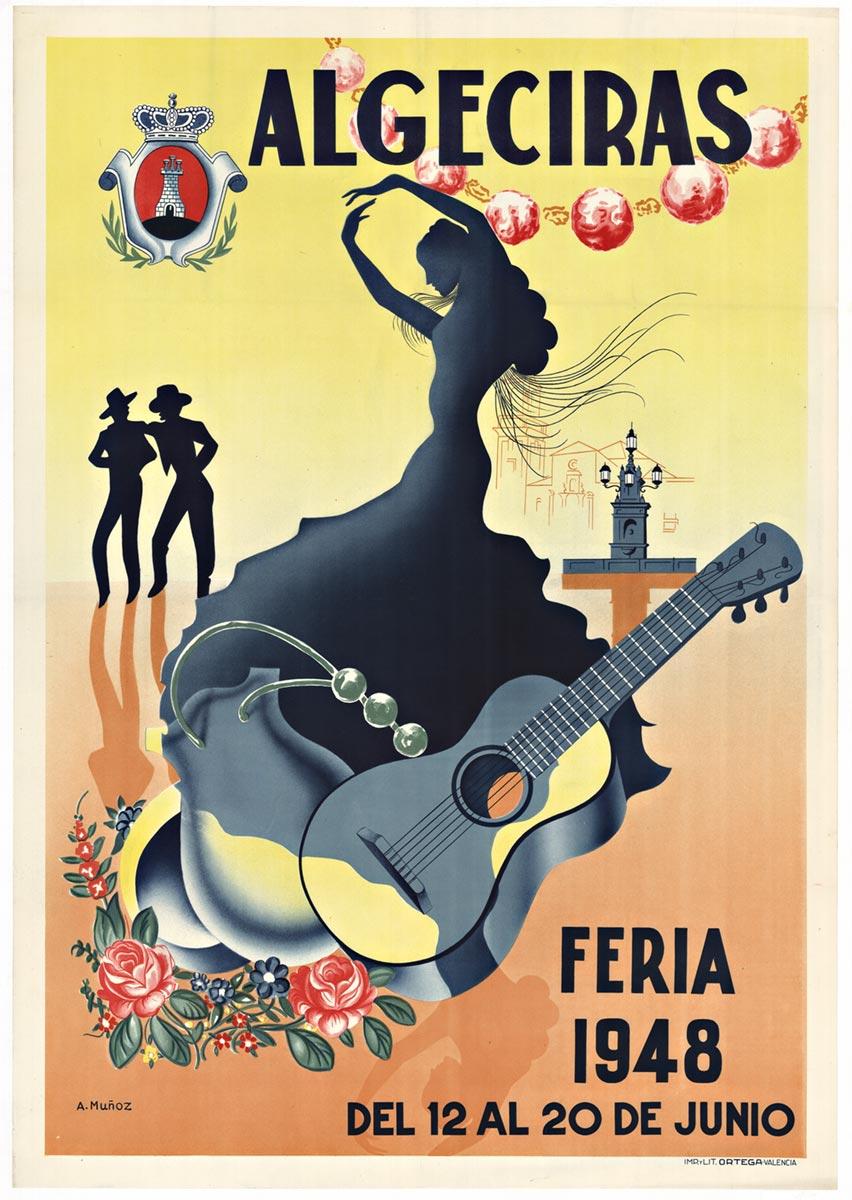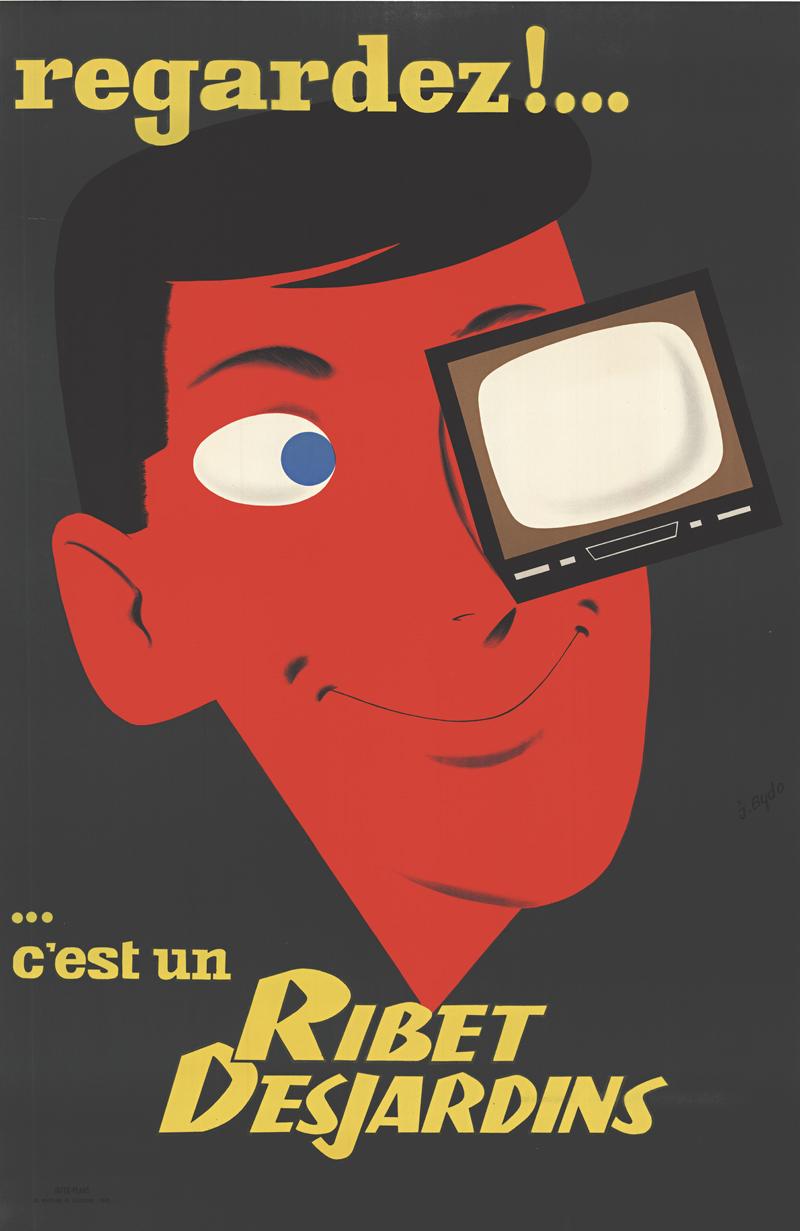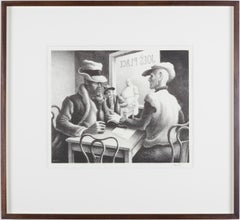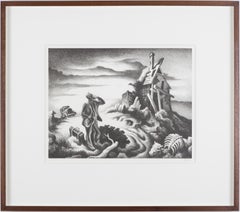Wilderness
View Similar Items
Want more images or videos?
Request additional images or videos from the seller
1 of 10
Rockwell KentWilderness1920
1920
About the Item
- Creator:Rockwell Kent (1882-1971, American)
- Creation Year:1920
- Dimensions:Height: 16.25 in (41.28 cm)Width: 13.25 in (33.66 cm)Depth: 1 in (2.54 cm)
- Movement & Style:
- Period:
- Condition:
- Gallery Location:San Francisco, CA
- Reference Number:Seller: kent/wil/011stDibs: LU66635571082
About the Seller
5.0
Platinum Seller
These expertly vetted sellers are 1stDibs' most experienced sellers and are rated highest by our customers.
Established in 1999
1stDibs seller since 2017
683 sales on 1stDibs
Typical response time: 1 hour
More From This SellerView All
- II Cup of JoeLocated in San Francisco, CAThis artwork titled "II Cup of Joe" c.1990, is an original color serigraph by American artist Rickey Jewell Hohimer, 1946-2021. It is hand signed, titled and numbered 250/300 in pencil by the artist. The image size is 19.5 x 23.5 inches, framed size is 26.75 x 30 inches. The artwork is in excellent condition, the frame is slightly damaged at the top, and will be replaced by a new similar black frame when sold. This will bring the over all condition to excellent. About the artist: Although formally trained with a MFA in painting, Rickey Jewell Hohimer has used the styles of Van Gogh and Gaughin to reach for the spontaneity and simplicity of today's folk art. Hohimer creates figures which are not photos of reality; they are romantically stylized to encourage straightforward emotional responses both to the colorful images and to the situations in which they find themselves. Each of Hohimer's paintings lays out a basic story line to which viewers add their own details. "I want the viewer to become personally involved. My paintings offer a change from those which encourage extensive intellectualizing about what the artist is trying to convey. I want viewers to smile -- to enjoy the whimsical nature of what they are experiencing -- to feel it, not to analyze it!. His jazz paintings are stories on canvas of inspired musicians spontaneously making music of the moment. Life in the jazz age is clubs and nightlife beckoning to musicians to produce jazz art...Category
Late 20th Century American Modern Figurative Prints
MaterialsScreen
- ToastLocated in San Francisco, CAThis artwork titled "Toast" c.1990, is an original color serigraph by American artist Rickey Jewell Hohimer, 1946-2021. It is hand signed, titled and numbered 98/300 in pencil by the artist. The image size is 23.75 x 9.5 inches, framed size is 30.25 x 16.25 inches. The artwork is in excellent condition, the frame is slightly damaged, and will be replaced by a new similar black frame when sold. This will bring the over all condition to excellent. About the artist: Although formally trained with a MFA in painting, Rickey Jewell Hohimer has used the styles of Van Gogh and Gaughin to reach for the spontaneity and simplicity of today's folk art. Hohimer creates figures which are not photos of reality; they are romantically stylized to encourage straightforward emotional responses both to the colorful images and to the situations in which they find themselves. Each of Hohimer's paintings lays out a basic story line to which viewers add their own details. "I want the viewer to become personally involved. My paintings offer a change from those which encourage extensive intellectualizing about what the artist is trying to convey. I want viewers to smile -- to enjoy the whimsical nature of what they are experiencing -- to feel it, not to analyze it. His jazz paintings are stories on canvas of inspired musicians spontaneously making music of the moment. Life in the jazz age is clubs and nightlife beckoning to musicians to produce jazz art...Category
Late 20th Century American Modern Figurative Prints
MaterialsScreen
- Prowling LeopardBy LeRoy NeimanLocated in San Francisco, CAThis artwork titled "Prowling Leopard" 2003 is an original color serigraph by noted American artist LeRoy Neiman, 1921-2012. It is hand signed and numbered 64/425 in pencil by the artist. The image size is 26.5 x 35 inches, framed size is 40 x 48 inches. It is custom framed in a gold frame, with fabric matting and green/gold spacer. It is in excellent condition. About the artist: Mr. Neiman's kinetic, quickly executed paintings and drawings, many of them published in Playboy, offered his fans gaudily colored visual reports on heavyweight boxing matches, Super Bowl games and Olympic contests, as well as social panoramas like the horse races at Deauville, France, and the Cannes Film Festival. Quite consciously, he cast himself in the mold of French Impressionists like Toulouse-Lautrec, Renoir and Degas, chroniclers of public life who found rich social material at racetracks, dance halls and cafes. Mr. Neiman often painted or sketched on live television. With the camera recording his progress at the sketchpad or easel, he interpreted the drama of Olympic Games and Super Bowls for an audience of millions. When Bobby Fischer and Boris Spassky faced off in Reykjavik, Iceland, to decide the world chess championship, Mr. Neiman was there, sketching. He was on hand to capture Federico Fellini directing "8 ½" and the Kirov Ballet performing in the Soviet Union. In popularity, Mr. Neiman rivaled American favorites like Norman Rockwell, Grandma Moses and Andrew Wyeth. A prolific one-man industry, he generated hundreds of paintings, drawings, watercolors, limited-edition serigraph prints and coffee-table books yearly, earning gross annual revenue in the tens of millions of dollars. Although he exhibited constantly and his work was included in the collections of dozens of museums around the world, critical respect eluded him. Mainstream art critics either ignored him completely or, if forced to consider his work, dismissed it with contempt as garish and superficial — magazine illustration with pretensions. Mr. Neiman professed not to care. Maybe the critics are right," he told American Artist magazine in 1995. "But what am I supposed to do about it — stop painting, change my work completely? I go back into the studio, and there I am at the easel again. I enjoy what I'm doing and feel good working. Other thoughts are just crowded out." His image suggested an artist well beyond the reach of criticism. A dandy and bon vivant, he cut an arresting figure with his luxuriant ear-to-ear mustache, white suits, flashy hats and Cuban cigars. "He quite intentionally invented himself as a flamboyant artist not unlike Salvador Dalí, in much the same way that I became Mr. Playboy in the late '50s," Hugh Hefner told Cigar Aficionado magazine in 1995. LeRoy Runquist was born on June 8, 1921, in St. Paul. His father, a railroad worker, deserted the family when LeRoy was quite young, and the boy took the surname of his stepfather. He showed a flair for art at an early age. While attending a local Roman Catholic school, he impressed schoolmates by drawing ink tattoos on their arms during recess. As a teenager, he earned money doing illustrations for local grocery stores. "I'd sketch a turkey, a cow, a fish, with the prices," he told Cigar Aficionado. "And then I had the good sense to draw the guy who owned the store. This gave me tremendous power as a kid." After being drafted into the Army in 1942, he served as a cook in the European theater but in his spare time painted risqué murals on the walls of kitchens and mess halls. The Army's Special Services Division, recognizing his talent, put him to work painting stage sets for Red Cross shows when he was stationed in Germany after the war. On leaving the military, he studied briefly at the St. Paul School of Art (now the Minnesota Museum of American Art) before enrolling in the School of the Art Institute of Chicago, where, after four years of study, he taught figure drawing and fashion illustration throughout the 1950s. When the janitor of the apartment building next door to his threw out half-empty cans of enamel house paint, Mr. Neiman found his métier. Experimenting with the new medium, he embraced a rapid style of applying paint to canvas imposed by the free-flowing quality of the house paint. While doing freelance fashion illustration for the Carson Pirie Scott department store in Chicago in the early 1950s, he became friendly with Mr. Hefner, a copywriter there who was on the verge of publishing the first issue of a men's magazine. In 1954, after five issues of Playboy had appeared, Mr. Neiman ran into Mr. Hefner and invited him to his apartment to see his paintings of boxers, strip clubs and restaurants. Mr. Hefner, impressed, showed the work to Playboy's art director, Art Paul, who commissioned an illustration for "Black Country," a story by Charles Beaumont about a jazz musician. Thus began a relationship that endured for more than half a century and established Mr. Neiman's reputation. In 1955, when Mr. Hefner decided that the party-jokes page needed visual interest, Mr. Neiman came up with the Femlin, a curvaceous brunette who cavorted across the page in thigh-high stockings, high-heeled shoes, opera gloves and nothing else. She appeared in every issue of the magazine thereafter. Three years later, Mr. Neiman devised a running feature, "Man at His Leisure." For the next 15 years, he went on assignment to glamour spots around the world, sending back visual reports on subjects as varied as the races at Royal Ascot, the dining room of the Tour d'Argent in Paris, the nude beaches of the Dalmatian coast, the running of the bulls at Pamplona and Carnaby Street in swinging London. He later produced more than 100 paintings and 2 murals for 18 of the Playboy clubs that opened around the world. "Playboy made the good life a reality for me and made it the subject matter of my paintings — not affluence and luxury as such, but joie de vivre itself," Mr. Neiman told V.I.P. magazine in 1962. Working in the same copywriting department at Carson Pirie Scott as Mr. Hefner was Janet Byrne, a student at the Art Institute. She and Mr. Neiman married in 1957. She survives him. A prolific artist, he generated dozens of paintings each year that routinely commanded five-figure prices. When Christie's auctioned off the Playboy archives in 2003, his 1969 painting Man at His Leisure: Le Mans sold for $107,550. Sales of the signed, limited-edition print versions of his paintings, published in editions of 250 to 500, became a lucrative business in itself after Knoedler Publishing, a wholesale operation, was created in 1975 to publish and distribute his serigraphs, etchings, books and posters. Mr. Neiman's most famous images came from the world of sports. His long association with the Olympics began with the Winter Games in Squaw Valley in 1960, and he went on to cover the games, on live television, in Munich in 1972, Montreal in 1976, Lake Placid in 1980, and Sarajevo and Los Angeles in 1984, using watercolor, ink or felt-tip marker to produce images with the dispatch of a courtroom sketch artist. At the 1978 and 1979 Super Bowls, he used a computerized electronic pen to portray the action for CBS. Although he was best known for scenes filled with people and incident, he also painted many portraits. Athletes predominated, with Muhammad Ali and Joe Namath among his more famous subjects, but he also painted Leonard Bernstein, the ballet dancer Suzanne...Category
21st Century and Contemporary American Modern Animal Prints
MaterialsScreen
- OrchidBy Jack BruscaLocated in San Francisco, CAThis artwork titled 'Orchid" 1979 is an original color silkscreen on paper by American artist Jack Brusca, 1939-1993. it is hand signed, dated and numbered 6/200 in pencil by the art...Category
Late 20th Century American Modern Figurative Prints
MaterialsScreen
$1,200 - AbundanceLocated in San Francisco, CAThis artwork titled "Abundance" 1988 is a original color lithograph on paper by noted artist Max Coyer, 1954-1988 It is hand signed, dated, titled and number...Category
Late 20th Century American Modern Still-life Prints
MaterialsLithograph
- Sub CultureBy Caroline DurieuxLocated in San Francisco, CAThis artwork titled "Sub Culture" c1972 is an original color lithograph on wove paper by noted New Orleans artist Caroline Spellman Wogan Durieux, 1896-1989. It is hand signed, titled, dated and numbered 5/10 in pencil by the artist. The image size is 17.75 x 13 inches, sheet size is 19.85 x 15 inches. It is in excellent condition, some hanging tape from previous framing remaining on the back. About the artist: As a Southern female satirist, Caroline Spellman Wogan Durieux was a rare phenomenon in the early twentieth century. Today, she is highly regarded for her stinging lithographs that touch on human foibles as well as some of the important issues of her day. Born to a family of Creole descent in New Orleans, young Caroline was precocious; she began drawing at age four and completed a portfolio of watercolors depicting her city by the time she was twelve. She took lessons from Mary Butler, a member of the art faculty at Sophie Newcomb College, and, beginning in 1912, matriculated at the school full-time, where her instructors included Ellsworth Woodward, chair of the art department. She graduated with a bachelor’s degree in design in 1916 and one in education in 1917. Awarded a scholarship by the New Orleans Art Association, Durieux pursued further coursework at the Pennsylvania Academy of the Fine Arts from 1918 to 1920. Years later, she was encouraged to try lithography by Carl Zigrosser, an expert curator of prints at the Philadelphia Museum of Art, who became her mentor. With her husband Pierre Durieux—an importer of Latin American goods and later the chief representative of General Motors for South America—Caroline Durieux spent time in Cuba during the early 1920s. The couple moved in 1926 to Mexico City, where she met the great muralist Diego Rivera and became involved in the local art community. Following a short interval in New York City, Durieux went back to Mexico in 1931 and enrolled at the Academy of San Carlos (now the National University of Mexico) to study lithography. She returned to New Orleans seven years later and was hired to teach at her alma mater, Newcomb College, from 1938 to 1943. Starting in 1939, Durieux served as the director of Louisiana’s Works Progress Administration program, and her division was the only one in the state not to practice racial discrimination. This was a matter she felt strongly about, stating: “I had a feeling that an artist is an artist and it doesn’t make any difference what color he or she is.” From 1943 until her retirement in 1964, Durieux was a member of the faculty at Louisiana State University in Baton Rouge. Durieux’s forte was lithography, a technique popular in the mid-nineteenth century and long associated with social commentary, and her prints proved no exception. Her work in the 1930s and 1940s coincided with a rise in art that dealt with poverty, racism, and totalitarianism. She often presented stereotyped social climbers...Category
Late 20th Century American Modern Figurative Prints
MaterialsLithograph
You May Also Like
- DiscussionBy Thomas Hart BentonLocated in London, GBA fine impression with large full margins published by Associated American Artists.Category
1930s American Modern Figurative Prints
MaterialsLithograph
- Prodigal SonBy Thomas Hart BentonLocated in London, GBA fine impression with full margins published by Associated American Artists with their information label present - pictured in Art and Popular Religion in Evangelical America, 1815-...Category
1930s American Modern Landscape Prints
MaterialsLithograph
- Budding GroveLocated in Santa Fe, NMMILTON HEBALD (1917 - 2015) In 1994, at 77 years, Milton Hebald, one of the pre-eminent American figurative sculptors of the 20th centur...Category
1990s American Modern Figurative Prints
MaterialsRag Paper, Digital, Digital Pigment
- Two DancersLocated in Santa Fe, NMMILTON HEBALD (1917 - 2015) In 1994, at 77 years, Milton Hebald, one of the pre-eminent American figurative sculptors of the 20th centur...Category
1990s American Modern Figurative Prints
MaterialsRag Paper, Digital, Digital Pigment
- Snack BarBy Isabel BishopLocated in Westport, CTA member of New York's 14th Street School, Isabel Bishop is best known for her graphic art and urban subject matter. Born in Cincinnati, Ohio, she arrived in New York in 1918 at age ...Category
Early 20th Century American Modern Figurative Prints
MaterialsEtching
- Noon HourBy Isabel BishopLocated in Westport, CTNoon Hour. 1935. Etching. Teller 18. 6 7/8 x 4 7/8 (sheet 11 3/8 x 8 1/2). Edition 250 published by Associated American Artists in 1946 (were a few earlier impressions from a propose...Category
Early 20th Century American Modern Figurative Prints
MaterialsEtching
